Dyer's woad identification and control
About this weed
Dyer’s woad is a regulated Class A noxious weed. This means eradication is required state-wide. Dyer’s woad is also on the Washington quarantine list and it is illegal to buy, sell or offer it for sale in the state.
Dyer’s woad is known as Isatis tinctoria and it is in the mustard family.
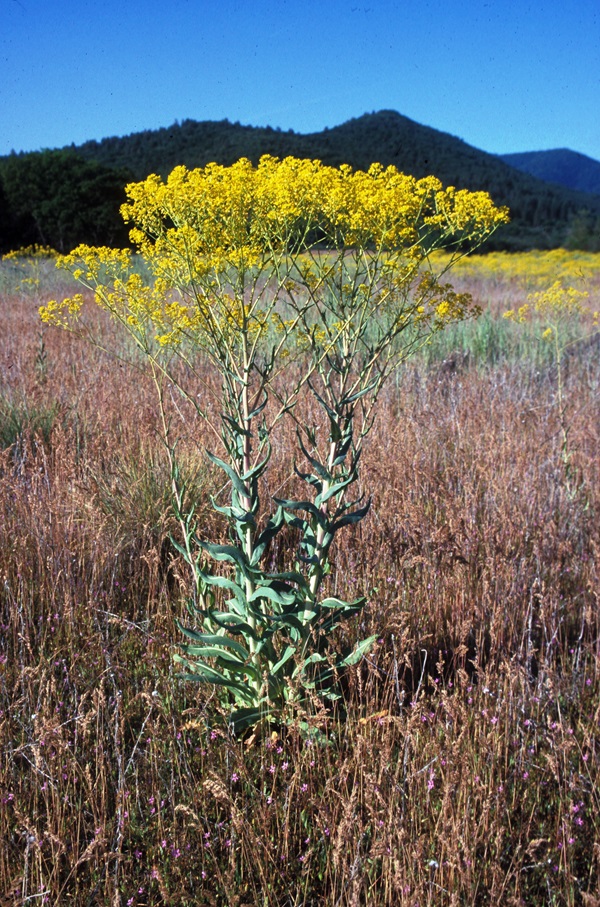
Why it's a problem
Originally cultivated as a source of indigo dye, dyer’s woad escaped cultivation. The species has a history of aggressively taking over rangelands. Animals do not find this plant tasty, which lowers forage value and range quality for owners.
There is little dyer’s woad in King County, so we still have the chance to keep the plant from dominating our landscape. But to do this, we must control the plants as soon as we see them to prevent spread.
Plant description
Dyer’s woad is native to Europe, Asia, and northern Africa. Dyer’s woad typically takes 2 years to mature, so plants will look different depending on which stage they are in. Plants thrive best in rocky, well-drained soils that don’t hold a lot of water.
First year plants' rosette stage is a circular arrangement of leaves growing close to the ground. Its leaves are bluish green, have long stems, obvious cream-colored midveins, and grow up to 7 inches long. They may be covered with long hairs, especially on the veins. Edges are weakly toothed to wavy. Its leaves are shaped like rounded arrowheads and are smaller closer towards the stem.
Second year plants are leafy and flowering with 2 to 4 feet tall stalks. These plants have up to 20 stems per rosette or plant. Its gray to purplish flowering stems typically branch near the top. Leaves are alternate (not directly across from one another) on the stems. The blue dye chemical is in the leaves.
Dyer's woad flowers appear April to June. Flowers are small, yellow, and cross-shaped, typical of the mustard family.
Seeds form in flattened, pear-shaped seed pods after flowering. Pods do not open at maturity. Seed pods turn from green to purplish-black as they mature. Each pod contains one dull yellow seed. Seeds mature 4 to 6 weeks from flowering.
Dyer’s woad reproduces by seed, producing 350 to 500 seeds per plant. Rotting seed pods contain a chemical that discourages the growth of other surrounding plants.
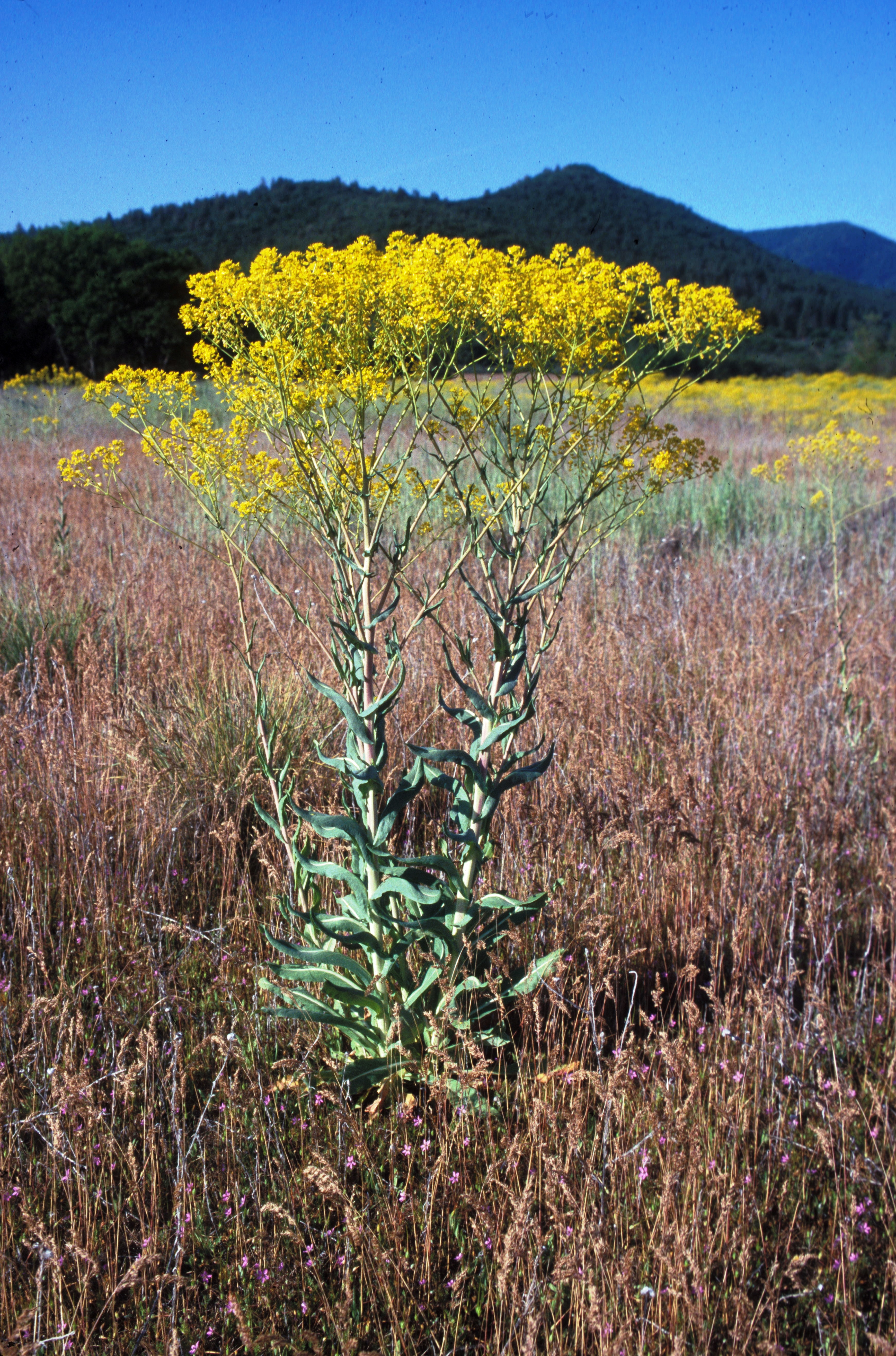

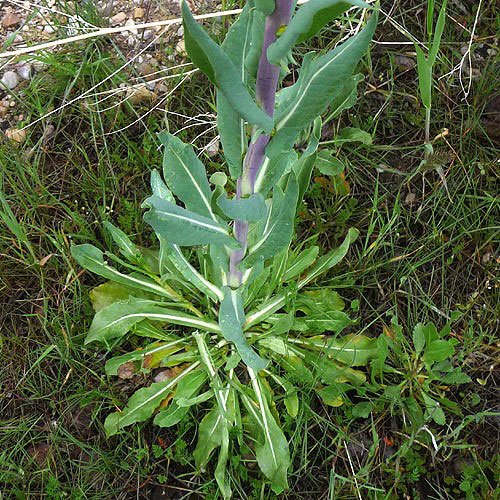
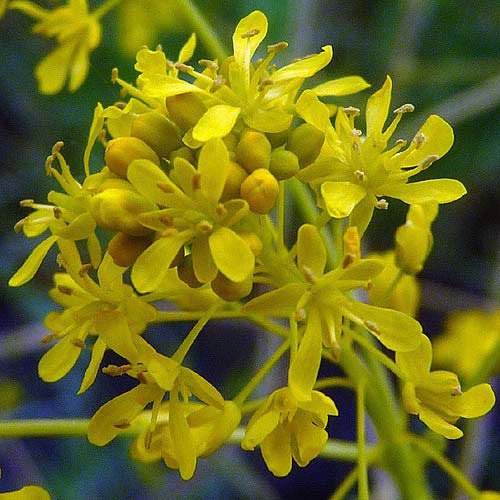
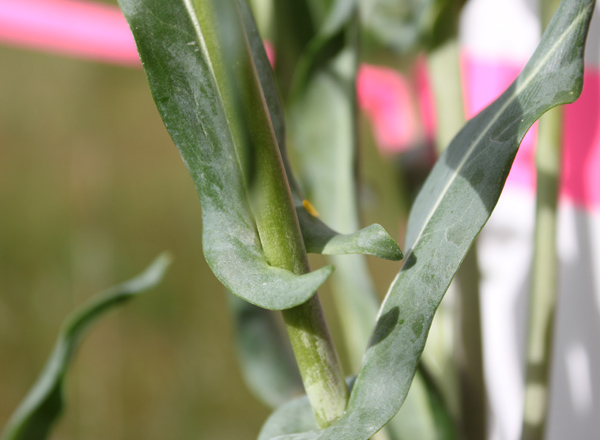
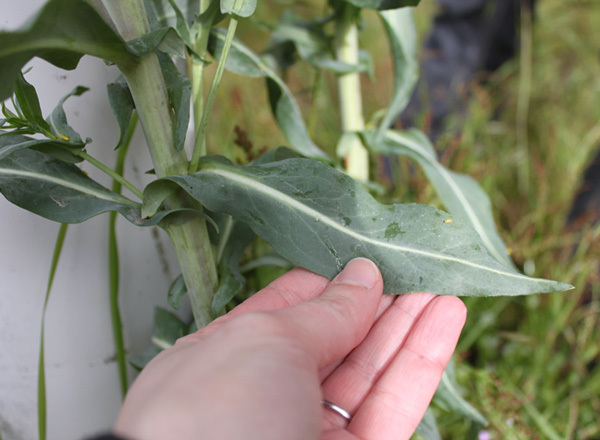
Be aware of look-alike plants
Due to its tall leggy branches and yellow flowers, dyer’s woad can be confused with other plants in the mustard family. Its seed pods are helpful in telling them apart from others. Dyer’s woad’s distinct seed pods are flattened, and pear shaped and hang down, whereas other plants in the mustard family usually have long and slender seed pods that often grow upright.
It may look like hoary cress before flowering, but once flowered you can tell the two apart by hoary cress’s white flowers versus dyer’s woad’s yellow flowers.
It could also be confused with dalmation toadflax, which also has yellow flowers. Tell the two apart by how dyer’s woad has multiple branches at the top where flowers bloom, whereas dalmation toadflax does not branch as much and usually grows from one main stalk.
When in doubt, take photos and share them with us or report them on iNaturalist.
What to do if you find it
Please notify us if you see dyer's woad growing in King County. Property owners are required to control dyer’s woad on their property. Our program staff can provide you with site-specific advice on how best to remove it.
We map all known locations of regulated noxious weeds such as dyer's woad to help locate new infestations in time to control them.
Control methods
We recommend using a combination of methods to control noxious weeds. In areas with few weeds, it is important to act quickly before they become harder to control. Make a long-term plan as it often takes several years to get rid of most weeds. Start in the least infested areas first and then move into more heavily infested areas.
Manual control
Hand pulling is the recommended control option. Pull or dig out plants after they grow upwards in their second year but before seed pods appear. Take care to get the roots.
Mechanical control
Mowing or cutting is most effective for flatter open areas and should be done in the springtime before seeds are produced, and just in time for drier weather as to discourage new plant growth.
Chemical control
Stay safe when using herbicide:
- Always read the label before use.
- Wear a long-sleeved shirt, long pants, shoes, and eye protection.
- Follow state and local regulations.
Herbicide is most effective on first year plants and second year plants that have not yet produced flowers. Herbicides such as 2,4-D, metsulfuron, and chlorsulfuron have been found effective in these earlier stages, but not after seeds begin to set.
See the PNW Pest Management Handbook for the most up to date and specific method for chemical control of dyer’s woad.
For more information or a site-specific control recommendation in King County, contact the noxious weed program. For information in other counties in Washington state, contact your local weed board or your local cooperative extension office.
Disposal instructions
Plants without flowers or seeds can be pulled and composted on site. It is preferable to leave them on a tarp or stack of sticks to keep the stems from re-rooting in the soil.
Flowers and seeds must be bagged and disposed of in the garbage, not yard waste.
Noxious Weed Disposal - Washington State Noxious Weed Control Board

 Translate
Translate